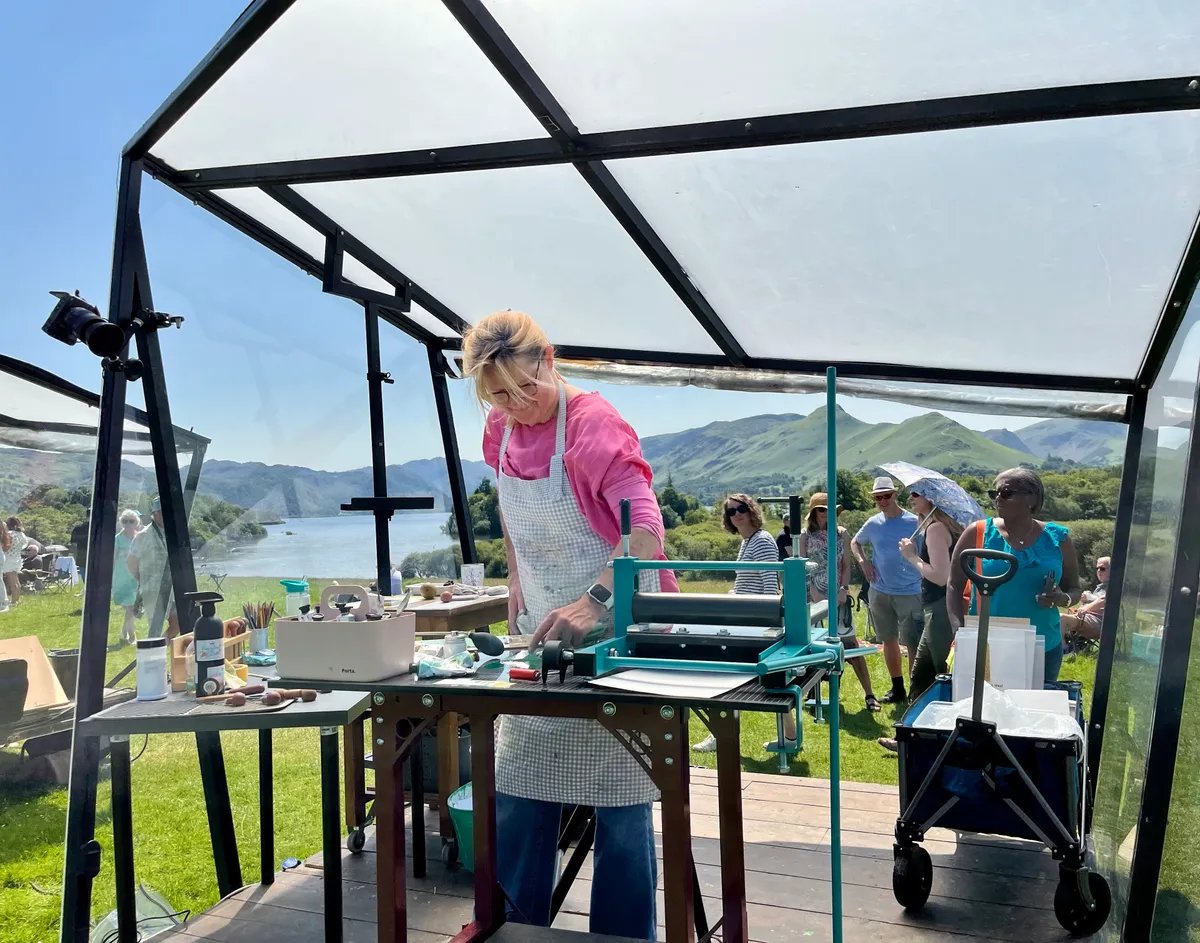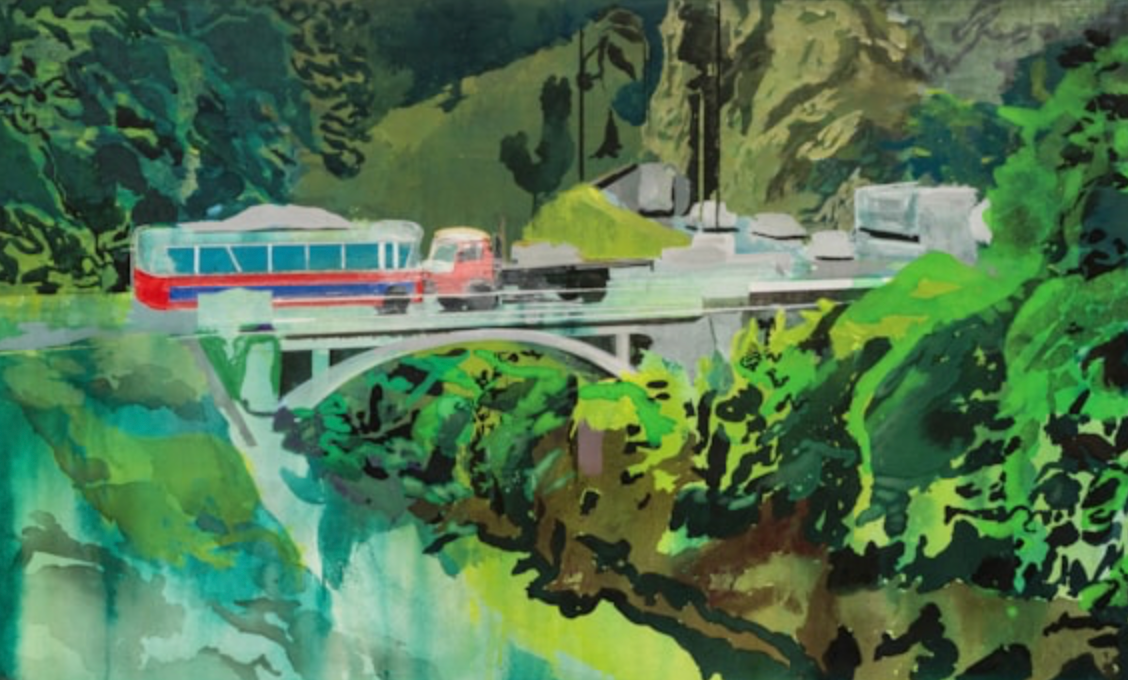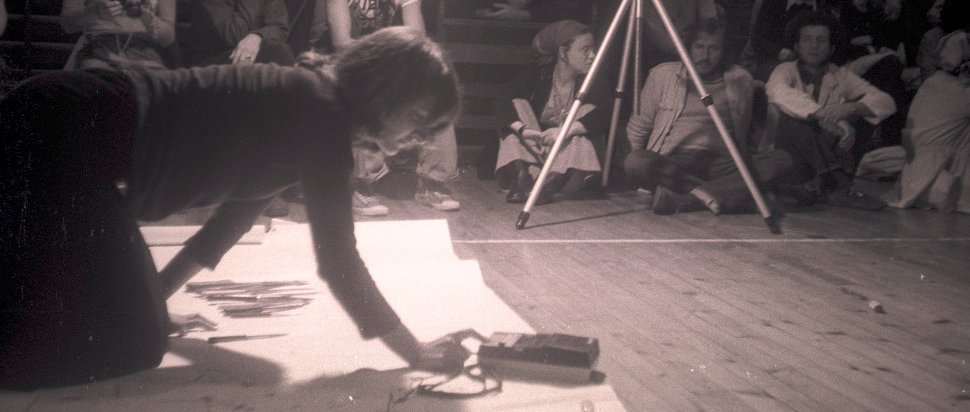Bob Dilworth has been drawing and painting since he was a child growing up in Lawrenceville, Virginia in the 1950s and 60s. The art teacher at a local HBCU encouraged Dilworth to apply to the Rhode Island School of Design, and after studying painting there, he went on to teach a few different places, before coming back to Rhode Island in the early 90s.
After teaching at URI for nearly 30 years, Dilworth retired in early 2020. But he hasn’t slowed down. I met with him in his garage studio in a quiet corner of Providence where he paints for 10-14 hours a day. Dilworth had several paintings in progress on canvasses 6-8 feet tall. Most of his paintings are portraits, more or less life-sized, and he describes the subjects as his community: his friends in Rhode Island, and people from his hometown.
“It was a very small African American community that was fading very rapidly. But it was a vibrant community when I was growing up and that was sort of fading away,” Dilworth said. “I think it was happening in a lot of very small Southern towns. But I wanted to capture some of that vibrancy that I grew up with.”
Vibrant is an accurate description for Dilworth’s paintings. The people in his paintings seem to float on backgrounds that are electric, with layers of different techniques — stencils, multicolored oils with visible brushstrokes, and swatches of fabric. Dilworth takes several trips a year to Lawrenceville, talking with friends and family, making sketches and taking photographs that end up as studies for his large-scale paintings. In recent years, he’s started taking pieces of patterned fabric as well: tablecloths and curtains.

“The patterns and the designs in a way represented the people that I talked to. And so that kind of was the beginning of the idea of introducing fabric and other kinds of material to the canvas. And then I realized something else, is that painting wasn’t just about paint on canvas or paint on a surface. That painting could be about whatever you put on the surface that helps best to represent who that person was that you wanted to portray,” Dilworth said.
“That was another thing that I was dealing with that sort of conflicted with a lot of things in my head, and that is that I didn’t see these as portraits. You know, I was really working against the idea of portraits, that these are paintings about something other than that. I was trying to capture something other than that, you know, a culture. I don’t know, a time. Maybe even capture a memory,” Dilworth said. “They were not portraitures until I realized they really are,” he laughed.
I first saw Dilworth’s work in the RISD Black Biennial in 2022. His painting “Bear Witness,” which he worked on in the early days of COVID isolation, had a place of prominence in the show. As you entered the gallery, you could see it in the distance facing you on the opposite wall.

“‘Bear Witness’ is about people who were at the George Floyd incident, or murder, I should say. They were there witnessing something, not really sure what they were looking at. Or what they were seeing was so horrific that they couldn’t believe that it was happening. So that was sort of the basic idea,” Dilworth said. “But I also was just, you know, amazed at how involved artists were at the time. And it seemed the Black Lives Matter movement had a lot of really strong art. You know, there was this strong art element in it. Murals everywhere: Breonna Taylor, George Floyd, there were many, many, murals all, in every major city all over the country.”
The painting is over nine feet tall and features several middle-aged Black men all looking in the same direction, to the left of the viewer. Some are mid-stride, others are standing still with their arms crossed. In the foreground, you can see the back of another man, standing on a ladder with paint cans perched on top.
“I wanted to show an artist, actually the four guys are like a mural that an artist is creating of this scene, of this horrific scene. So basically it’s an artist painting an artist who’s painting a mural of this horrific scene that’s going on,” Dilworth said.
But we don’t see George Floyd himself. Instead, we see the men who are stoically witnessing the murder. The painting was recently purchased by the RISD Museum to be part of its permanent collection.
Along with friends and family from Virginia, Dilworth paints portraits of his community here as well. He told me about a painting of his friend Maria, who is of Cape Verdean descent.

“I asked her if she would pose for a painting and she came in this sort of traditional Cape Verdean festival costume,” Dilworth said. “It was amazing, you know. She made it herself, and there were these bright colors, a lot of swirls and everything. The costume was layered with all kinds of material.”
The painting is full of swirls of reds, blues and greens, with a double figure of Maria’s face at the top, floating in the layers of Dilworth’s paints.
“It was just great for stenciling and sequence, and adding bright color fabric,” he said. “I work a lot of times in phases, so it would reach a certain point. I would leave it alone, maybe even consider it finished. But then I would look at it and go, no, it needs more. Or it needs another layer of something. And because I stencil, you can take this stencil and just move it a little bit over one side or another, up or down, and create these echo effects.”

In addition to the portraits, Dilworth has been working on a series called “Lawrenceville Landscapes” — another way he tries to capture the spirit of his hometown.
“We would play in the forest all the time, you know? And it was just this wonderful, magical place and time,” he said. “We’d build tree houses. there was a creek about less than a quarter mile in the back. And there was a spring that led to the creek. … We had a string of, this sort of colony of tree houses. I mean, you could really walk from tree house to tree house, to tree house to tree house, you know. I mean, it was just, it was really amazing. … And so I was trying to capture some of that as well – but not just the forest, but it was just this whole magical period.”
At first glance, the landscapes may look like abstractions, but with a closer look, you can see leaves, flowers, vines and other plants using layer after layer of painting technique.

Even though Dilworth has been painting for over 50 years, he’s still expanding and adding to his technique. Along with several paintings in progress, he showed me a piece he’s working on with old neckties as the background and canvas figures stitched on top.
“And then I trace that onto the canvas, and then I would go over that with this idea of free-motion sewing. So this is, it’s kind of cool. It’s like drawing with the machine,” Dilworth said. “Not only creating these new images, but there’s a process that I’m not totally, I’m not familiar with at all. So all that’s new as well.”
In addition to new art techniques, Dilworth is also working on new mediums, including a graphic novel and a traditional novel.
“It’s Afrofuturism. It is Black, Southern, gothic. It’s fantasy, it’s science fiction. And of course, it takes place in Lawrenceville,” he said.
Along with Oscar-winning actress Octavia Spencer, Dilworth is a 2024 recipient of a Trinity Repertory Company Pell Award, celebrating national and local excellence in the arts. I asked Dilworth how it felt to be honored in a ceremony like this.
“It didn’t become real … until the actual performance,” he said. “I was in here working, sewing, you know, painting. And around two o’clock, I said, wait a minute, there’s an award ceremony. I better get ready. I have to stop working and get ready for it.”
You can find more examples of Bob Dilworth’s paintings at Cade Tompkins Projects.







